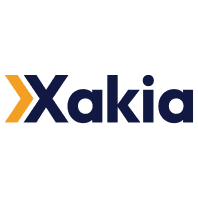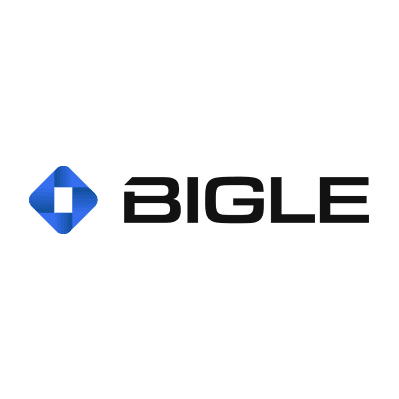How Corporate Legal Teams Can Successfully Vet and Implement AI-Enabled Legal Solutions

For corporate legal teams, AI-enabled solutions can absorb much of the repetitive manual work that can come between attorneys and their primary job responsibilities – mainly the practice and execution of high-level legal work. In fact, AI can not only absorb this work, but, more often than not, it can complete it much faster than any human worker could (assuming the average worker lacks the processing power to keep all potentially relevant data top-of-mind at all times).
However, the enthusiasm for AI solutions permeating nearly every corner of the legal industry means that legal departments need to remain diligent about choosing the right solution to meet their own very particular needs. This task can be made especially complicated by the realities of a rapidly expanding legal technology marketplace, where even solutions that are marketed as AI-enabled or AI-powered don’t technically feature any AI at all.
But how to best tell the difference? In order to help corporate legal departments cut through the din, here are three tips for vetting and successfully implementing legal AI solutions.
Identify Your Goal
It’s all too easy to get excited about AI-powered legal technology solutions. When used properly, AI can help streamline process-heavy workflows, drive new insights into a legal department’s relationship with their outside counsel and serve as general boon to operational efficiency that allows lawyers to focus their attention on higher level work.
But excitement is seldom an adequate substitute for a cohesive and purposeful strategy. Onboarding an AI-enabled solution simply because it stirs the imagination is a swift path towards frustrated ambitions and investments that largely go unreturned. Before a legal department even begins the process of approaching AI vendors, it would be wise to define the key performance metrics (KPIs) that will ultimately be used to determine whether a project was a success or failure.
Put more simply: What exactly are you trying to accomplish here?
Identifying the current baseline KPI’s that a legal department would like to enhance using technology is especially crucial in the case of AI, since AI-enabled technology works on a portfolio level. Don’t just look to automate current processes, but instead see if a solution could allow you to enable new capabilities that can’t be achieved under the existing process.
For example, if you are reviewing 20% of your invoices today using your human review team, don’t just look to find more savings from those 20%. Instead, see if you can leverage AI as a prioritization mechanism, reviewing 100% of invoices to find the 20% where 80% of savings are located.
Be Realistic
So you’ve set your goals and are feeling pretty good – but how do you know if a prospective AI vendor or solution is actually capable of delivering? After all, the legal technology marketplace is growing increasingly crowded with products boasting various applications of AI – and the sky-high promises offered by marketing campaigns don’t always measure up to how those products actually operate or function on the ground. AI is an important tool, but it also has limits and is nowhere near becoming a replacement for people with strong domain expertise.
You should never hesitate to ask a prospective AI vendor any questions that may arise about how a piece of technology functions. Queries about the design process are also fair game. For example, it’s a good idea to confirm whether any legal domain experts were involved throughout the product’s development. While data scientists will always remain a core pillar of bringing the complex algorithms at the heart of any AI solution to life, domain expertise is an essential to assuring that the product meets the needs of the audience it was built to serve. Domain experts can also serve as bridge spanning legal department clients and the tech vendor’s data scientists, collecting and relaying the feedback needed to ensure that a piece of AI is being constantly updated to reflect new trends.
This blend of sophisticated technology and human experience can be incredibly potent. AI is extraordinarily good excels at rapidly identifying patterns or flagging potential violations, errors, and inconsistencies. In the hands of experts, that machine-generated input can be used to enhance operational decision-making and identify targets for improvement. The feedback can also be incorporated back into the AI algorithm to further enhance the quality of its outcomes and generate ongoing dividends.
Data – both quantity and quality – are critical to how effectively a piece of legal AI will function. You’ll want to ask where and how a tech vendor is sourcing the data underlying its solution, which can make all the difference to performance. Sources that are held to a standardized format – think the Legal Electronic Data Exchange Standard (LEDES) that frames the legal invoice data flowing through matter management and e-billing systems – typically yield “clean” and accurate data sets.
Still, if all else fails, there are some guideposts that legal operations professionals and their organizations can follow to help filter out the hype. For example, it’s usually a good omen if you can easily wrap your mind around the core value proposition that a piece of AI-enabled tech is claiming to offer. Case in point: Automating tasks that previously required the intervention of an attorney or other legal professional is both a simple objective and a hallmark of many of today’s legal AI solutions.
In a perfect world, the ideal vendor should be a business partner as well as a legal technology provider. They should clearly understand your program objectives and how they fit into the company’s business goals They should also have extensive experience doing similar work with other legal departments and be able to guide you through some of the key steps necessary to achieve your goals.
Seek Out Implementation Support
A successful technology implementation doesn’t begin and end with the solution at hand. It is nothing short of critical to identify a technology vendor who can serve as a partner throughout the change management process. Failure to get off on the right foot can doom an innovation project before its even begun, transforming an opportunity to enhance existing processes into a situation that requires an organization to go through the hassle of devising entirely new processes altogether.
Adoption is crucial, seeing as tools that aren’t being used won’t be of much help to anyone. But it’s not uncommon for new technologies to be met with resistance by an organization’s personnel, who have a grown accustomed to certain processes or routines. Employees may great the arrival of a new AI-enabled solution with fear that their sense of power and control are being taken away.
Luckily, there are some precautions that legal departments can take to smooth the way for adoption. For starters, general counsel and legal operations professionals will want to confirm that a vendor conducts product training not only for an organization’s in-house legal personnel, but relevant counterparts based at law firm partners who may be asked to use the solution as well.
It’s always a good idea to do business with a technology provider who can help you earn the trust of employees by creating transparency around the technology, both in terms of its strengths and weaknesses. This step is especially crucial with regards to in AI enabled tech since it works on probabilistic behavior and patterns. Hence highlighting examples of where it doesn’t work and how to handle those scenarios is key for earning trust.
At the same time, be sure to draw attention to how it is enabling the collective decisioning to be better instead of human and machine separately. Vendors who can offer a “buddy system” where domain experts with a data scientist are paired to share their learnings and answer questions, can also go a long way towards building employee trust.
Create awareness not just through videos, demoes and training material but hands on experience. Let the users test drive the new piece of technology through pilots and proof of concepts. It can also be immensely helpful to identify the early adopters among your staff who are willing to serve as evangelists or success stories personified for their more reluctant colleagues.
It also helps to have a familiar face on speed-dial who can help troubleshoot any issues that may arise over the life of the solution. Check to see if a prospective vendor offers a designated point of contact clients, in addition to regular meetings to discuss goals, problems or anything else a client may wish to address.
The Benefits Are Manifest
While the adoption process shouldn’t be taken lightly, none of this is intended to dampen the enthusiasm around AI and the technology’s potential to drive robust new efficiencies inside corporate legal departments. The benefits are manifest: AI can automate time-consuming manual tasks, turn unused data into analytics that help professionals make critical business decisions, and direct the department’s efforts to optimize performance. It doesn't need a new cup of coffee to remain alert at three o'clock in the afternoon. It isn’t hindered by distracting external pressures and doesn’t try to wrap up early on a Friday to get the weekend started.
But legal departments should still continue to ensure that they have clear expectations, are engaging vendors that are deploying the right combination of domain and data expertise, and build employee trust throughout the implementation process. Once those steps have been taken, in-house legal teams and their organizations can leverage each new piece of AI technology purchased and weave them seamlessly into their existing processes with maximum effect, helping them to remain competitive against other peers operating within the industry who are deploying the same efficiencies.






